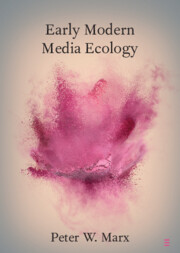Element contents
Early Modern Media Ecology
Published online by Cambridge University Press: 23 January 2024
Summary
- Type
- Element
- Information
- Online ISBN: 9781009298148Publisher: Cambridge University PressPrint publication: 15 February 2024
Bibliography
Primary Sources
Secondary Sources
- 3
- Cited by



